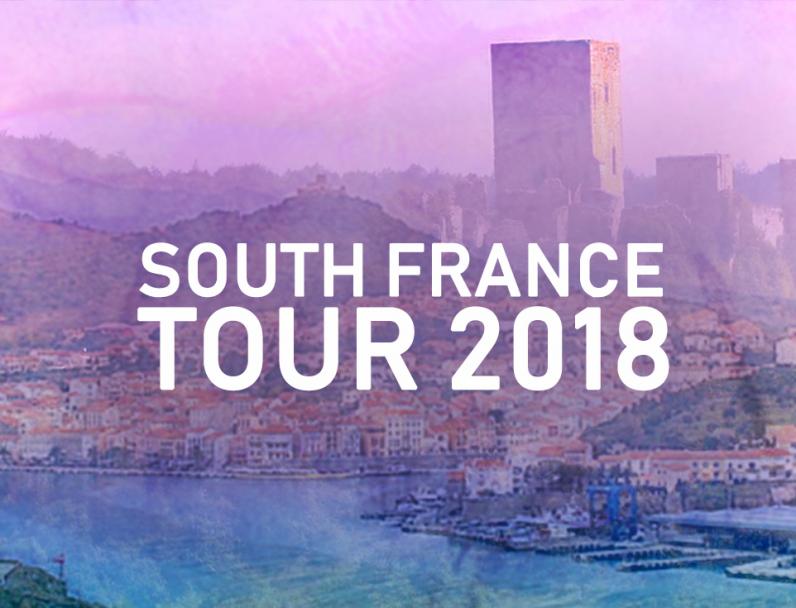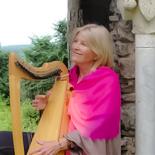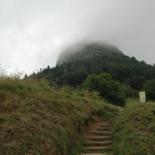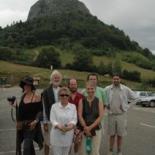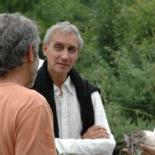What do the Holy Grail, Mary Magdalene, The Da Vinci Code, The Cathars and Templars, Rennes-le-Chateau, The Golden Ratio, Alchemy, Pharaohs, Freemasons, ancient scrolls, and scientific and modern physics all have in common? The only way to find out is to come to the South of France to explore and study with one of the leading experts in Ancient Mysteries, Or you might just wish to come for the French food, wine, beautiful stone villages and countryside! Surrounded by pristine nature, we will be treated to healthy, hearty French meals and wine, and staying in gorgeous French boutique hotels.
For all lovers of French cuisine, good wine, ancient legends and mysterious stories, we have prepared a unique experience in Southern France based on over our 12 years of sponsoring tours and retreats in this region of the world. Nowhere is there an esoteric heritage as old or as rich as the exquisitely beautiful Languedoc and Catalan regions. Become acquainted with sacred Cathar sites, trace the legends of the Holy Grail, unravel The Da Vinci Code, follow the footprints of Saint Trophime, old alchemists and Nostradamus, walk amongst the ancient standing stones and dolmens, all imbued with the mythology of Mary Magdalene.
Our timing Is perfect, as our grand finale of the tour, we will all witness and partake in SAINT JEAN’S DAY Celebration of the Summer Solstice at on the famous Cathar Mt Segur!
We invite you to join us after the Breakthru-Technologies conference being held on June 8-11 at Lake Monbel, to begin our South France tour on June 13th. Arrive into Carcassonne on June 12th or earlier, take a few days in Paris then a train ride to Carcassonne. We will transfer you to Lake Monbel where the tour begins at 9am, 13th June.
Sponsored and organized by Roger Green, with leading researcher Eva Lenova, and guests Ani Williams and Dan Winter
Enquires: [email protected]
Download Brochure
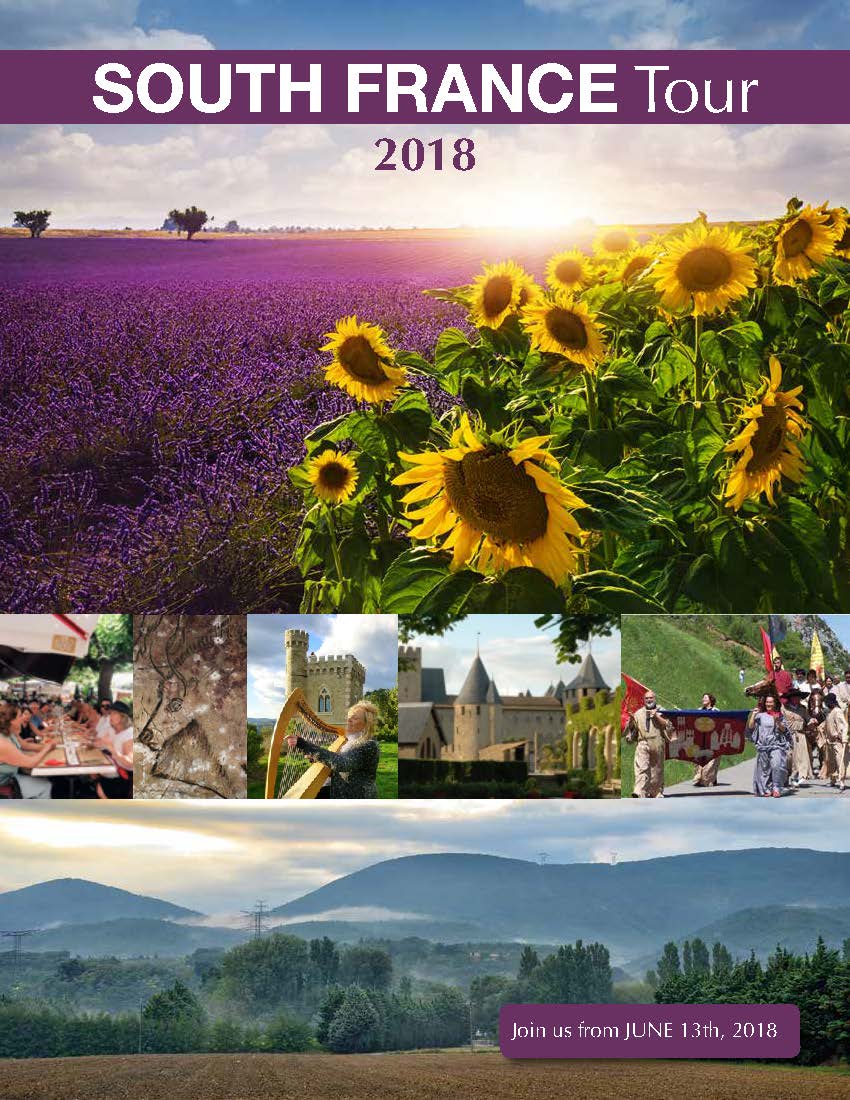
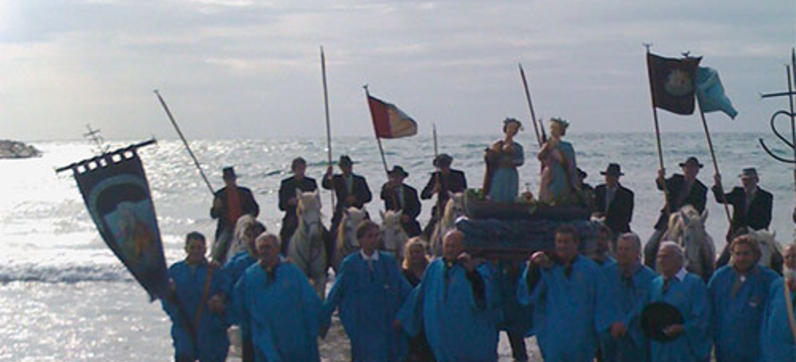

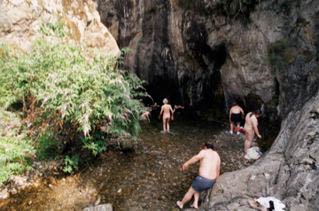
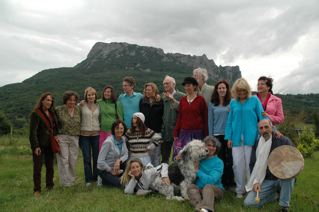
DAY 1 June 13
-
The famous Niaux caves; Connecting with the oldest temples of the Goddess and Earth Energies.
-
Ax les Thermes; The ancient spa town with 70ºC water from the Pyrenees: rest and bathe
-
Foix; Home of the Counts of Foix, whose favour for the Cathar teachings caused the siege of both the city and the castle.
-
Hotel Stay: Lake Monbel
The Divine Feminine called seekers here throughout the ages, and this region was the most literate and cultured in Europe, with a distinctive language, vibrant court life and high degree of autonomy. The people of the Languedoc protected themselves in the 11th century in fortified villages called castra, built around a church or castle. These were places where peasants, artisans, merchants and knights met and socialized. Lords dispensed justice, Troubadours developed their art, and from the 12th century Cathars found a ready audience for their teachings.
Cave Niaux is famous for its ancient wall paintings and is one of the most famous decorated prehistoric caves in Europe. The cave extends for more than 2 km and will reveal more than 70 exceptional prehistoric paintings.
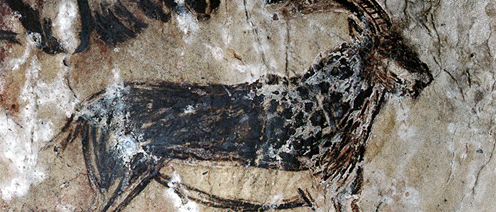
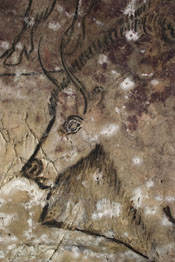
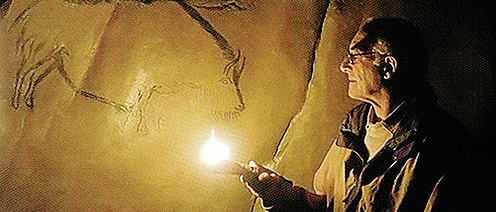
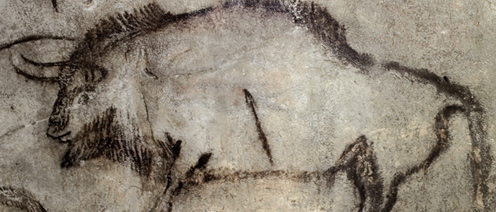
Ax les Thermes, The spa town has the warmest waters that gush from the Pyrenees. The therapeutic value is internationally recognized.
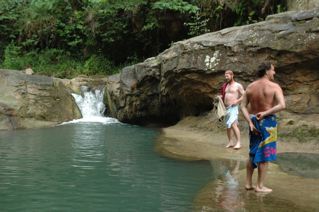
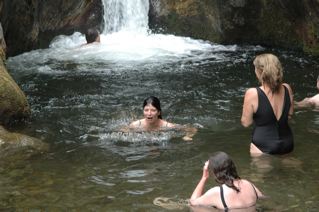
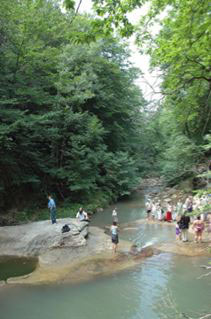
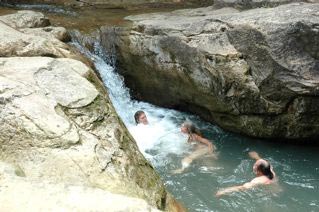
DAY 2 June 14
Theme: Working with Energies of the land and the connection of old and new.
Hotel Stay: Lake Monbel
The Medieval town of Mirepoix and The Rock Church in Vals. In the heart of the village stands the church…at first sight, you could believe that this building, austere and solid, is only a citadel, a castle left by some local lords. However, as you explore and look to the hidden side of the edifice, and climb towards the south-east, you will discover what the old one’s call ‘the platform of Rahus’.
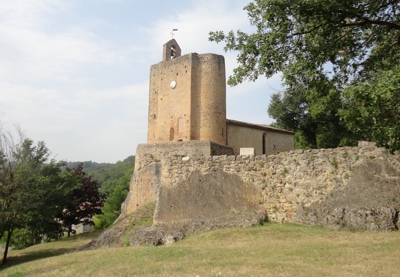
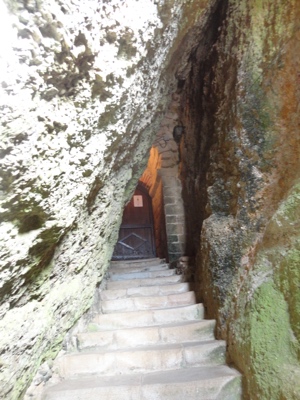
Carcassonne is at the crossing of two major traffic routes used since antiquity: from the Atlantic to the Mediterranean and from the Massif Central to Spain. The town is divided into two, quite separate parts. The Cité occupies a plateau on the right bank of the Aude. The Bastide Saint-Louis lies on the left bank. The old district of la Trivalle and the famous Old Bridge have been, from that time, the links between their two destinies. Carcassonne has inherited 2,000 years of history and invites you to discover its heritage of fine monuments, to wonder, rest, dream, eat and drink.
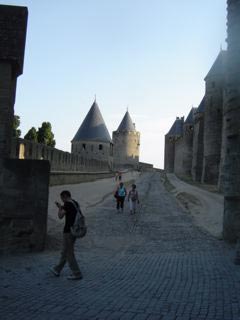
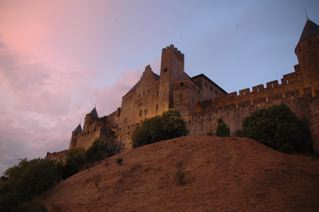
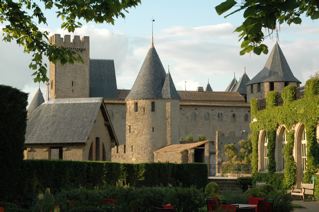
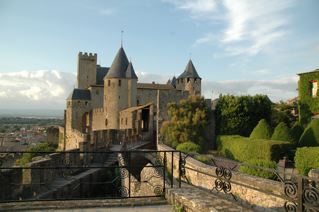
Limoux: The Church with the Black Madona, Jesus and the Mary Magdalene wedding image
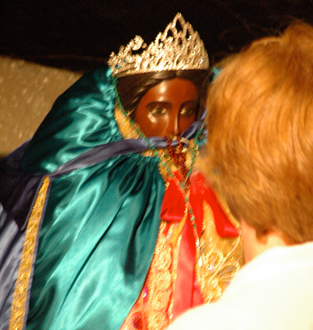
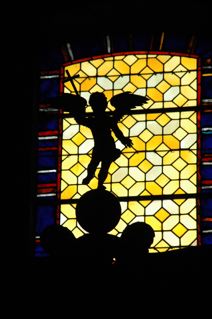
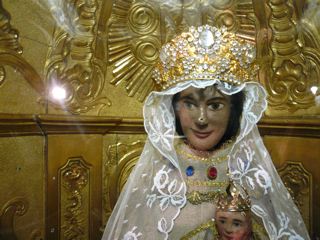
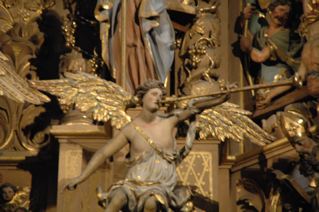
DAY 3 June 15
Theme: Castles, hermits and saints.
The Cathar Puivert castle. Legend has it that the town of Puivert welcomed a great gathering of troubadours in the 12th century. The instruments seen here are the bagpipes, flute, tambourin, rebec, lute, gittern, portable organ, psaltery and the bowed hurdy-gurdy. View the court of miracles, Eleanor of Aquitine, Queen of three Kings, and troubadour music.
Night in Port Vendres
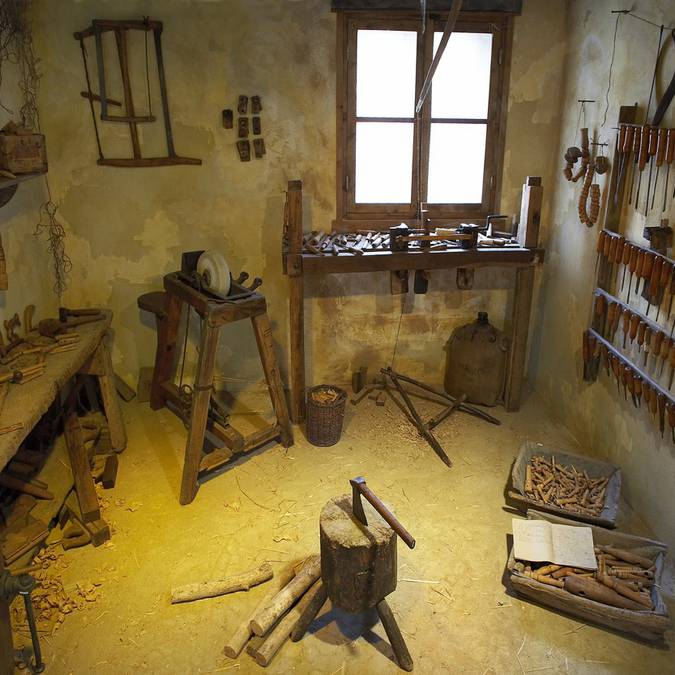
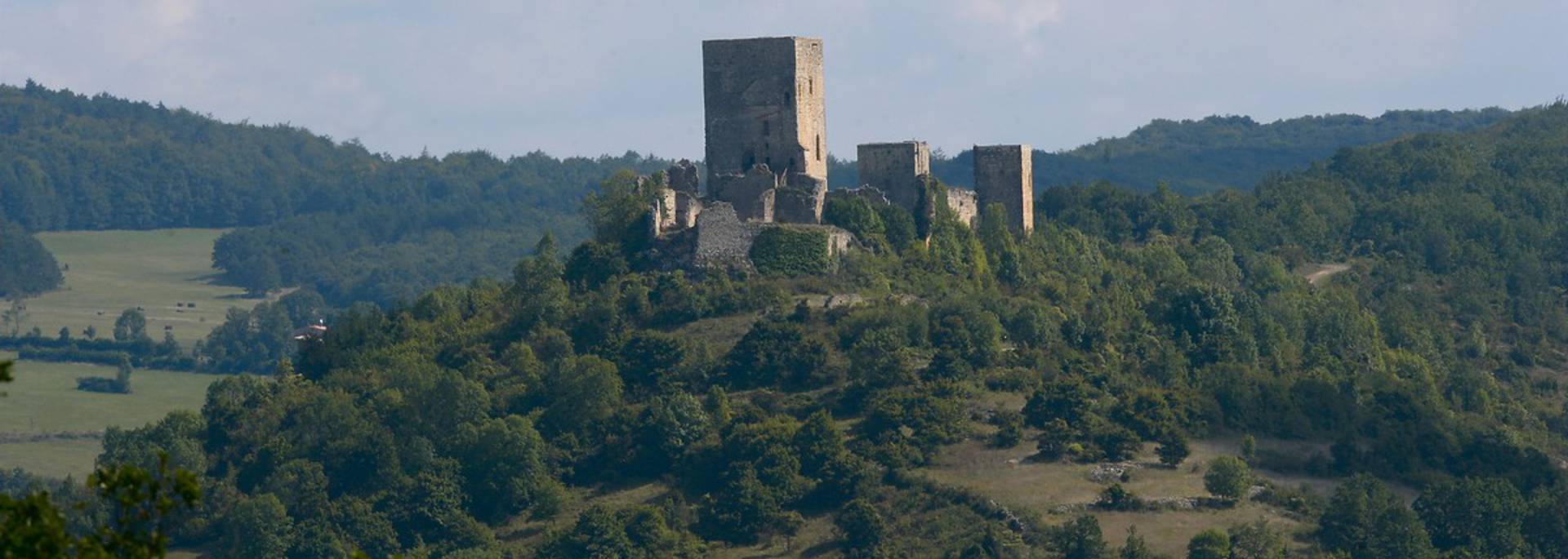
We drive through the amazing Gorges du Calamus on our way to Mt. Bugarach, which is the highest mountain in France, reportedly the inspiration for the Devil's Tower climax sequence in the science fiction film "Close Encounters of the Third Kind". The inactive volcano is used by Jules Vernes for his story Voyage to the centre of the Earth.
Our journey takes you through the exciting and breathtaking Gorge of Galamus, heralded as one of the deepest and most beautiful gorges in the world. The winding road into the gorge takes us past spectacular stone pools and the spellbinding Gorge of Galamus chapel.
Mount Bugarach is the infamous center of all UFO activity in France. The inactive volcano is rumored to be both a passageway to a subterranean realm of extra-terrestrials and a landing site for UFOs so that they might pick up pilgrims who have decoded the region's mysteries! So be careful! You might be staying in a hotel on a different planet tonight.
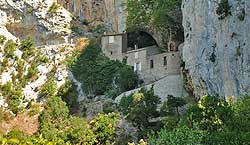
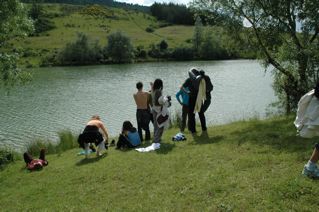
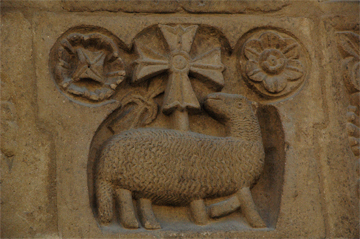
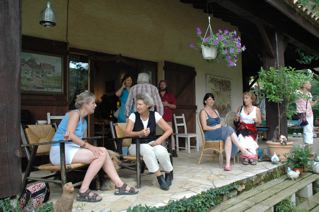
DAY 4 June 16
Theme: Using the energies of the ley-lines: Abbeys and town gates
Hotel stay in Port Vendres

Port Vendres, town of the Goddes Venus.
Port-Vendres is renowned for its numerous fish and sea food restaurants. It has been in existence since Iron Age times, when it was used as a harbor and later developed by the Romans, who called it Portus Veneris after the goddess Venus; there was a temple of Venus nearby for the good fortune of mariners, and since 1780, a 30 m high marble obelisk is a focal point of Port-Vendres.
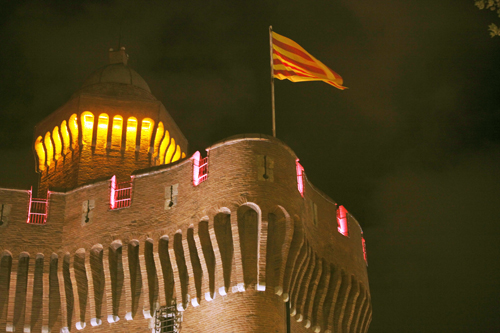
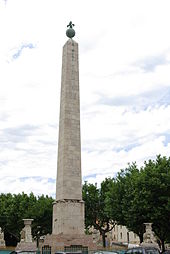
Perpignan, the capital of Septimania. The lavish but short-lived Kingdom of Majorca transformed Perpignan into an important trading town. About 40 to 50 million years ago, a shift in the earth’s crust causes the uplifting of the Pyrénées, where warm seas were, covered at the bottom with pieces of coral, plankton, sea-shells, a new landscape arises, in particular the Black mountains. Over millions of years, the river flows over the mountains and extract gravel and pieces of quartz. Out of this mixture of land and sea arises a unique stone: a limestone sown with many fragments of quartz.
Serrabona, the most famous Romanesque abbey in the county. The name of the monastery derives from the Catalan "serra bona", meaning "good mountain". Romanesque is an architectural style of medieval Europe characterized by semi-circular arches. It is known by its massive quality, thick walls, round arches, sturdy pillars, barrel vaults, large towers and decorative arcading. Each building has clearly defined forms, frequently of very regular, symmetrical plan; the overall appearance is one of simplicity when compared with the Gothic buildings that were to follow. It then developed in the 12th century into the Gothic style, marked by pointed arches.
Day 5 June 17
Theme: Ancient technologies, megalithic sanctuaries, graves sites, and connection with "modern" christian heritage
Hotel stay in le Vigan

Megaliths around Minerve
Between chapels and dry stone huts, between dolmens and menhirs, between mills and wash houses, an interesting heritage is here to discover. The Minervois region was a megalithic civilization, especially between around 2500 and 1500 years BC. Around 50 dolmens and about 10 standing-stones are known. The name of the region comes from the medieval town Minerve, one of the most beautiful villages in France. The word ‘Menerbes” is from the celtic root ‘men’ for stone and ‘erb’ for country so literally ‘stony country.
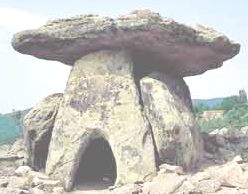
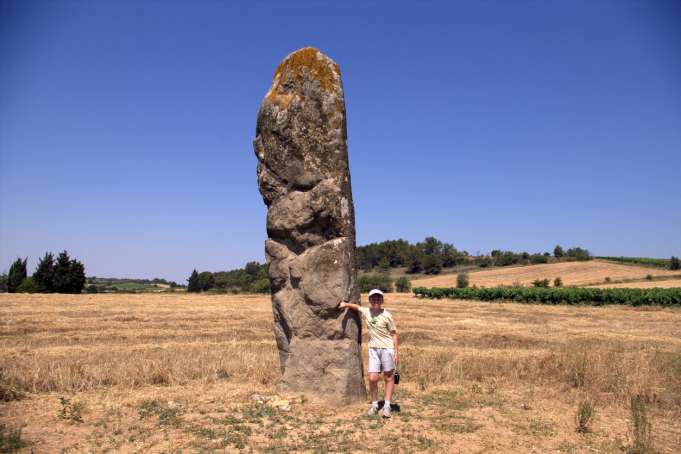
Wine tasting around Minerve. Minervois is renowned for its wines, which you can enjoy as much as you like (because we do all the driving)
Lodève and Saint Fulcran Cathedral with magnificent glass windows. The edifice is a typical example of local Gothic architecture.Lodève is an ancient town of Celtic origin, and sits at the foot of the mountains of the Languedoc-Roussillon region, and the cathedral has been classed a national historical monument.
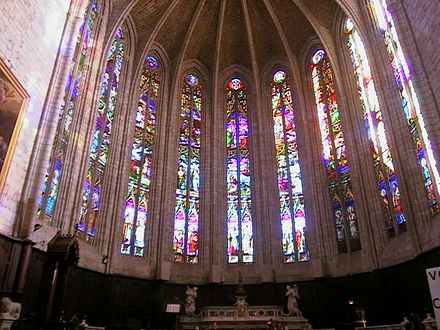
Megaliths in Saint Michel de Grandmont
We will encounter remnants of ancient civilizations and try to understand their messages and advice for present time.
DAY6 June 18
Theme: Ancient technologies - stone circles, a perfect example of natural energy movement –the torus, how the water can speak to us – and the re-emergence of the river Vis
Night in le Vigan
Comments from Vincent Bridges: “The Causse de Blandas, the Blandas plateau, is from the Vigan with its ancient Isis spring and temple to the Cirque de Navacelle and its statue of the Virgin, encompasses one of the most amazing arrays of ancient megalithic sites in Europe, three large cromlechs, sun circles, and literally hundreds of menhirs and dolmen. These sites are virtually untouched and allow for a deep connection to the ancient megalithic landscape spirituality.”
Cirque de Navacelles waterfall, and walking up the hill with to the statue of the Virgine, with its golden egg in the middle of the crater, the navel of the world…
Megalithic sites in the western part of the plateau
Le Vigan: originally Vindomagus with Fountaine d'Is: The town gathered a little way below the great sacred spring that now supplies its fountains and runnels with limpid water, once dedicated to Isis, the Egyptian goddess, who was introduced into Rome and became fashionable. It is still called the Fontaine d'Is, and the bath and remains of her temple are under the present corn market.
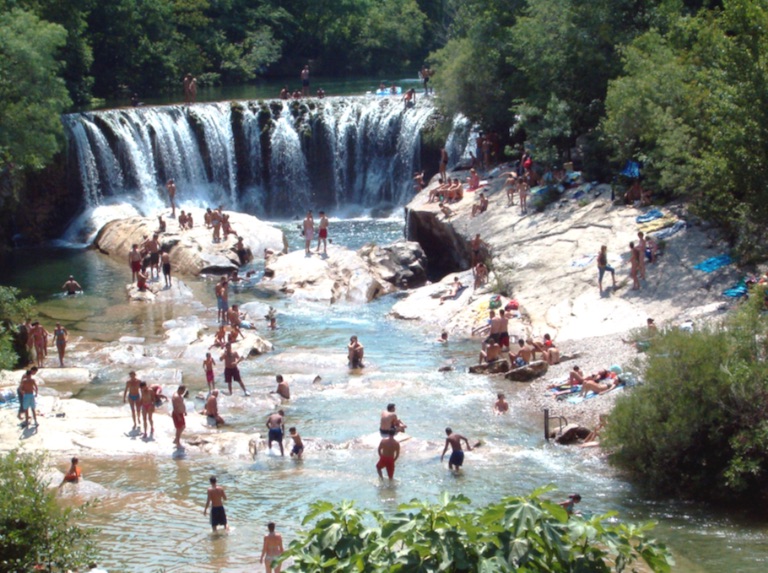
DAY 7 June 19
Theme: Ancient technologies and swimming in the pure nature energy
Night in le Vigan
Megalithic sites in the eastern part of the plateau: standing stones, stone circles and dolmens
Swimming in the river and waterfall
Grotte des Demoiselles: Welcome to the spectacular underground world of the Grotte des Demoiselles! (Cave of the fairies). The system of caves goes deep under the plateau of Blandas and is connected with many legends. Located in the heart of the Languedoc region, these limestone caves are host to a wide variety of unique mineral formations
Ganges the silk city. This town is famous for the cultivation of silkworms. Visit the local market and walk through the beautiful 17th century architecture of narrow streets and porches.
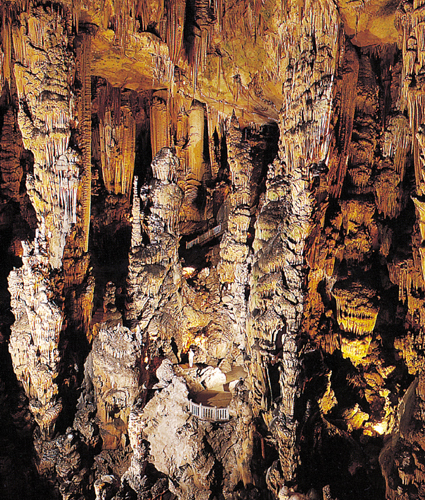
DAY 8 June 20
Theme: How the old christians used the energy of the land, temples older than we can imagine
St. Guilhem-le-desert. Hermitage of one of the famous authors of the medieval Holy Grail Knight’s legends
Cap Agde beach resort: Swimming in the sea in one of the most beautiful beaches in France
Narbone cathedral, one of the centres of heresy in South France
Hotel stay in Quillan
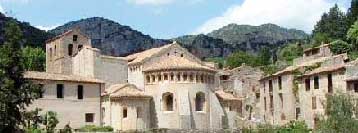
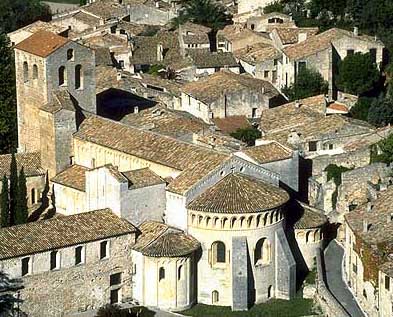
The village has retained its medieval personality with old houses in amber stone, an ancient tower, and a shady square with a fountain and traditional plain trees. It sprawls organically along the Verdus stream, surrounded by cliffs, verdant with thyme, oak and pine trees. Saint-Guilhem-le-Désert is counted among the ‘Plus Beaux Villages’ (most beautiful villages) of France. It is home to numerous artists, many of whom may be found in their studios around the square. Overlooking the village, on the side of the cliff, is a castle of Visigoth origin. It was only ever a modest fortress but has attracted colourful stories involving Visigoths, Saracens and troubadours. According to legend this castle was once the abode of a Saracen giant, called Don Juan, who was defeated in improbable circumstances by the eponymous Guilhem in single combat.
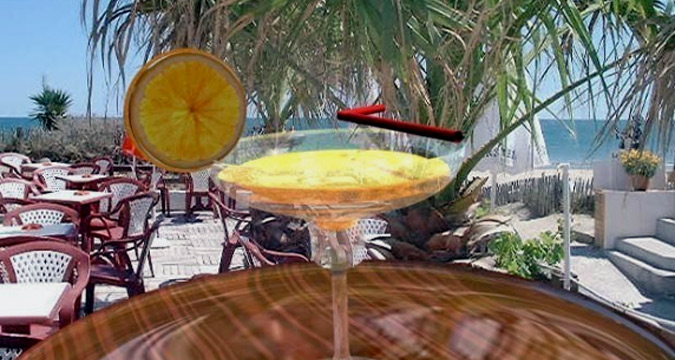
Cap d’Agde, France, is an enclosed self-contained village and resort, where often people are walking around in their birthday suit. Few places in the world are as unique as Cap d’Agde and this certainly is considered one of the best resorts of its type in the world, for sunbathing in the buff. Few places in Europe or the world take the natural body as seriously, or offer such a vast community of like-minded people.
Narbone Cathedral, an important center of heresy in South France: The High Gothic style of the Cathedral of Saint-Just and Saint-Pasteur takes its inspiration from the great cathedrals of Northern France. Its most striking feature is its unique choir, with vaulting soaring to more than 40 metres. It was built between 1272 and 1340 and remained unfinished because, in those troubled times, the Consuls refused to demolish the ramparts to provide stone to continue building. The side chapel, dedicated to Our Lady of Bethlehem, has a 14th-century altar-piece in painted stone. The Treasury, also known as the acoustic hall, displays a rich collection of liturgical objects, including ivories, gold and tapestries.
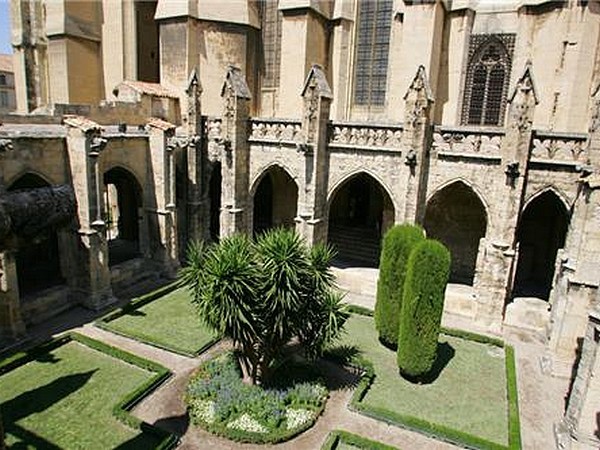
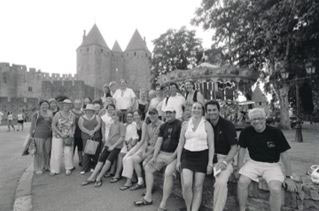
DAY 9 June 21
Theme: Using the energy of the land, explore the torus design at du Cuxa. Take in the air of Mount Canigou and the Pyrenees.
St. Michel du Cuxa- Lecture and tour with Dan Winter
Megaliths around Surnia
Medieval villages and aquaduct in Ansignan older than Roman aquaducts, possibly of celtic origin.
Night in Quillan
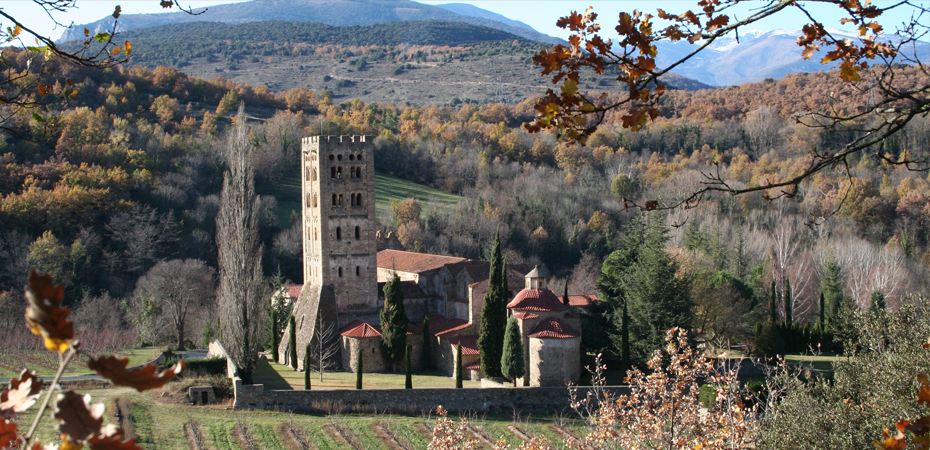
From the village of Taurinya we will venture to one of the loveliest abbeys in the country, Saint-Michel-de-Cuxa, founded by the Benedictines in about 840, located at the foot of Mount Canigou in the northeast Pyrenees. A community of Benedictine monks continued the monastic life which began 11 centuries ago. Parts of it now makes up The Cloisters museum in New York City, founded by John D Rockerfellow. The warm beauty of the native pink marble used at Cuxa harmonizes this cloister's many elements, such as the varied capital sculptures carved during different periods in its construction, and its beautiful crenellated tower silhouetted against the wooded slopes of Canigou, it will inspire a sense of wonder and mystery in all who visit. So too does the bare stone crypt within. You will experience the powerful magnetism of the village of Taurinya as we visit the stone crypt beneath the cathedral in the shape of the Torus Donut. (Feeling your hair stand up from charge compression inside - is a good experiential intro to Toroidal Sacred Geometry!). It is from this very crypt that the town of Taurinya takes its name. A highlight is this extraordinary torus architecture (wonderful for chanting), located in the underground chapel, designed with a huge central pillar. A beautiful location, peaceful and it will be a very interesting day accompanied by Dan Winter.
Canigou Swim of a Lifetime If conditions permit, we are planning a visit to the world's greatest gorge/cascade swimming hole just up the dramatic Canigou from the cathedral and tiny village - a short hike you will NEVER forget!
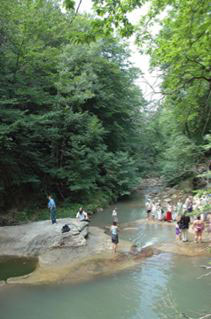
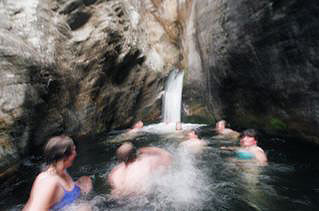
DAY 10 June 22
Theme: connections with mysterious legends and stories, and concert with Ani
Rennes-le-Chateau (the famous village of the Da Vinci code)
Rennes-le-Bain village and Roman spa.
Source de la Madeleine Throne of Isis or devils chair, rocking stone and Fontaine des Amours – the spring of the lovers.
Amours – the spring of the lovers, swimming in the river or spa
Night in Quillan
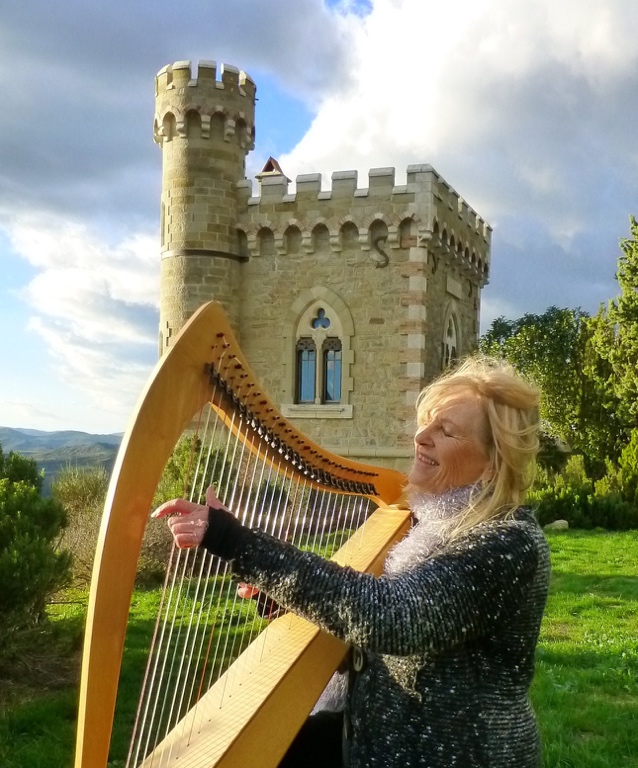
Concert with Ani Williams (American musician)
Ani Williams is a harpist, singer, author, and sound therapist. She has performed worldwide since the 1980s and has recorded more than 24 albums of original music based an ancient spiritual traditions. She has done seminal research in sound healing and the relationship between musical tones, the human voice and healing and she is a practitioner and lecturer on Hermetic Sound Alchemy.
Rennes-le-Chateau (the famous village of the Da Vinci code)
Introduction
The village church dedicated to Saint Mary Magdalene has been rebuilt several times. This survived in poor repair until the 19th century, when it was renovated by the local priest, Bérenger Saunière. One of the new elements was the Latin inscription Terribilis est locus iste above the front doors, taken from the Common Dedication of a Church, which translates as: "This is a place of awe"; A devil like figure holding up the holy water stoup is a rare and unusual choice for the interior decoration of a Church but not exclusive to the Church of Saint Mary Magdalene.
Believers in the enigma have suggested that Saunière's estate was set up on a large-scale checkerboard, while others have claimed that Saunière produced a Mirror image of selected architectural features of his property. They also allege that Maurice Barrès's novels Roman à clef and The Sacred Hill are largely based on the Rennes-le-Château story involving Bérenger Saunière (while novels by Jules Verne are cited to show that the enigma predates Abbé Saunière). All in all folks, a very deep mystery, retold by our teachers and expert in the village itself!
The village received up to around 100,000 tourists each year at the height of popularity of Dan Brown's bestselling novel The Da Vinci Code. The modern reputation of Rennes-le-Château rises mainly from claims and stories dating from the mid-1950s concerning the local 19th-century priest Father Bérenger Saunière. These stories influenced the authors of the worldwide bestseller The Holy Blood and the Holy Grail in 1982, whom one of the authors Henry Lincoln we have sponsored many times to talk to our study tour members. This work in turn influenced Dan Brown when he wrote The Da Vinci Code, published in 2003.
There are many stories about the "parchments" allegedly discovered by the priest Bérenger Saunière alluding to the survival of the line of Dagobert II. Books alleged that the Priory of Sion guarded the Merovingian dynasty's bloodline, that the dynasty descended from a supposed marriage of Jesus Christ and Mary Magdalene and Bérenger Saunière allegedly discovered that secret and amasses his wealth by blackmailing of the Holy See. Do we dismissed all of the popular allegations as pseudo-history? Come and find out for yourself!

For those serious students of the Knights Templar, early Christianity, the Holy blood, Holy Grail, the Da Vinci code and the Prieure de Sion and the hidden secrets of the Berenger Sauniere Parchments, the mysteries of Rennes-le-Chateau (where many of our study tours have been for last 10 years), The Grail, the Ark, the Emerald Tablet, The Merovingian Royal Blood line of Europe, the blood line of King Arthur, Sacred Geometry and meanings of the landscape, the secrets of alchemy and the philosophers stone, Nostradamus, John Dee, Shakespeare and the secret identity of Edward Kelley, Freemasons and the The Occult Roots of Christianity, The Cross of Lorraine, Hiram-King of Tyre, the Temple of Solomon, world mythology, and Judeo-Christian scriptures. This epic retelling of the real history of Earth has become a hallmark of the study tours with Roger and Eva and colleagues Dan Winter and the late Vincent Bridges.
Due to the popularity of the Da Vinci Code, the subject of Mary Magdalene has been covered in Time Magazine, Newsweek, on The History Channel, the Learning Channel and in specials aired on major TV networks, including dozens of books on the topic (the village has a great bookstore!)
The Bons Hommes, as the Cathars called themselves, created one of the most remarkable and enigmatic spiritual movements of the Middle Ages, the destruction of which was one of the great tragedies of European religious life. The Troubadours were the first to bring romantic love to the Western world in poetry and song of great elegance and charm that expressed a new merging of the erotic and the mystical.
Languedoc, along with the neighboring domains of Catalonia and Provence, is filled with culture and spiritual history. It is a region that carries significance for the medieval Grail stories and is imbued with the mythology of Mary Magdalene.
Rennes-les-Bains An adjacent village to Rennes-le-Chateau, Rennes-les-Bains is home to a renowned hot springs and the mysterious Fauteuil du Diable (the Devil's Armchair), a large boulder carved in the shape of a throne. Both the Devil's Armchair and the nearby spring figure strongly in the mystery of Rennes-le-Chateau, The Da Vinci Code, and the secret location of the Holy Grail. We particularly note the pent Golden Ratio symmetry in the star maps of Rennes and others in the region.
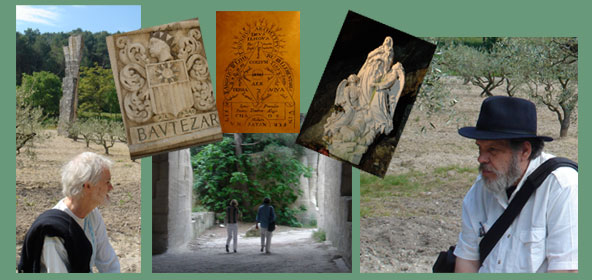
Lecture and Discussion with Dan Winter
How and why did the Holy Grail come to be located in the South of France? Why were Rennes-le-Chateau and all the regional magnetics profoundly manipulated to be five-sided? How does this compression symmetry create fertility and biologic vitality, feed DNA, and ultimately enable bliss and lucid dreaming? How and why did the ancient Celts arrange the Dolmen in this format - the only geometry that could feed their blood?
Imagine the drama we feel while standing in Sauniere's home at the Rennes Mygdala tower - knowing now why the scroll he discovered was the ultimate blackmail document not just for the church - but the all the royal families of Eeurope who had conspired - to put the "Disposyni" out of power. We bring into play Sir Gardner's ‘Genesis of the Grail Kings’ and the Annunaki origins of kingship - up to the present political dramas.
We will discuss Boudet's text on the origin of the Celtic language, and the importance of symmetry to this ancient language of the bloodlines. We will learn how the charge compression of the sacred sites that we visit can be measured and observed to cause our blood to electrically "sing": the real SanGraal. Moreover, we will discuss how this becomes the measureable origin of lifeforce.
From here we will introduce the blood survival symmetry knowledge of the ancient Dragon cultures (Celtic and Annunaki) which planted these Dolmen and attracted the Black (Rigelian) Madonna story.
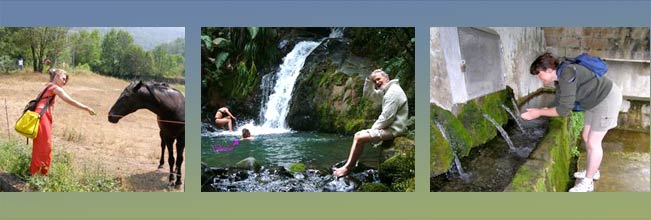
Referencing everything from MAG Dragon Queens to messiahs to the Reverent Mothers of Frank Herbert's Dune, we tell the full story in a day-long drama. This epic retelling of the real history of genes on Earth has become a growing hallmark of the advanced courses within the Sacred Geometry world tours. The telling of this story is gripping - and always evokes more excitement than we can handle in one day. Whether it's Jedi Knights checking for chloridians (implosion) in the blood, or Montauk checking for Boson Seven in DNA harmonics, or Tolkien checking to see if the Finnish/Draconic alphabet has produced the Lord of the Ring, the message is the same in your DNA. The dynamics of your blood and its ability to receive charge in a fractal - the Holy Grail - determine if you become (toroidal DNA) the Lord of the Ring.
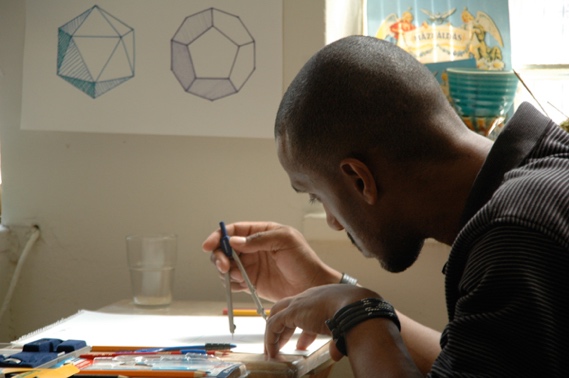
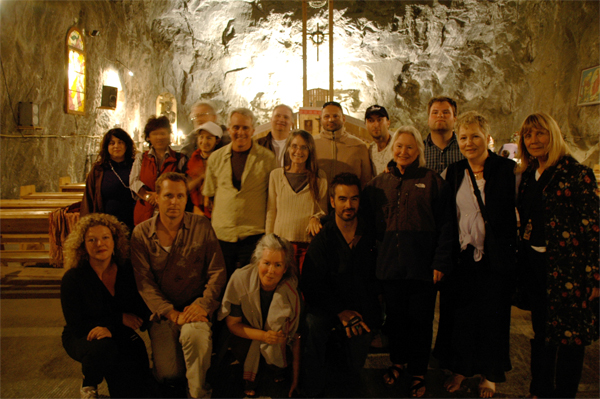
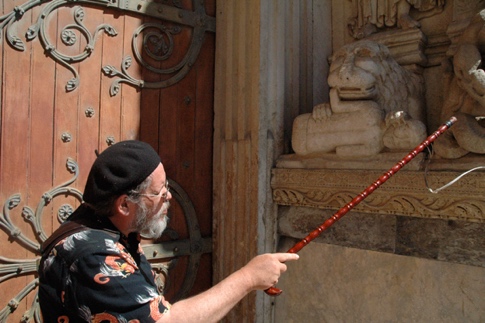
"This has been a sublime blend between the science of coherence, bliss and fractality with the lived life experience of all aspects of the program. It turns out that this program has been a path of initiation as much as a teaching program. I wholeheartedly recommend this inspirational tours to all who feel the inclination to come." — John Hare
"I found this group lit a fire in me to realize bliss. I thank Mother Earth for bringing this group together and may Mother Earth give the organizers a lot of energy to do many more such groups." — C. Difesa
DAY 11 June 23 SAINT JEAN’S DAY Celebration of the Summer Solistice at Mt Segur
Theme- The Grand finale. The temple of Sun and how it was used by Cathars, our time meeting the old times
Montségur St. John's fires- held only once per year – we witness this special gathering at the sacred Cathar mountain stronghold Montsegur.
Hotel stay in Quillan
Our timing is PERFECT. This event is only held once per year
The Fête de la St Jean, celebration of the summer solstice and a Catalan tradition. Each village sends its delegation on the Sunday preceding the Saint Jean. The group takes a bundle of sticks up to the peak, in the name of its village and lays it at the bottom of the Canigo’s cross. This celebration is accompanied by the St Jean bouquet that is composed of four specific herbs picked on the morning of the 23rd. Tradition requires walnut, St John’s wort, helichrysum and stonecrop leaves. These bunches are sometimes still hung on house doors to attract luck and happiness.
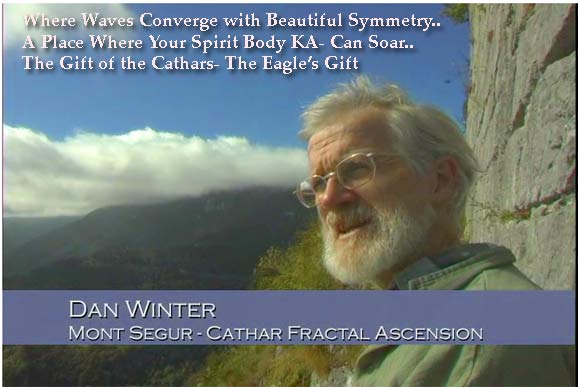
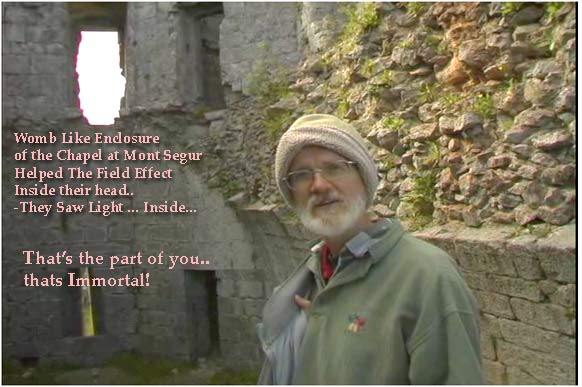
The ruins of Mont Segur are perched at a precarious 1,207m altitude in the heart of France's Languedoc-Midi-Pyrenees regions. Mont Segur dominates a rock formation known as a pog -- a term derived from the local Occitan dialect meaning peak or mountain. In 1243-1244, the Cathars were besieged at Mont Segur by 10,000 Royal Catholic French troops. In March of 1244, the castle finally surrendered and the Cathar defenders were burned en masse in a bonfire at the foot of the pog. However, in the days prior to the fall of the fortress, several Cathars allegedly slipped through the French lines carrying away a mysterious "treasure" with them. While the nature and fate of this treasure has never been identified, there has been much speculation that it could have easily been the Holy Grail.
Every year the locals gather with an international group to celebrate the Cathar bravery of stepping into the Fire-rather than surrender their deeply held beliefs to the Cathlolic powers of the time.
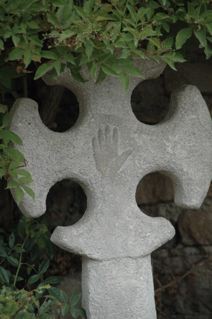

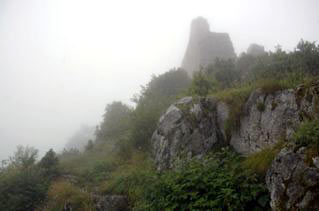
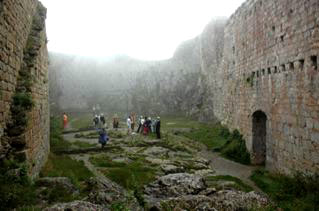
DAY 12 June 24
Tour ends at breakfast in Quillan
Your own transfer back to home or onwards for more adventure.
Transfer can be provided to nearest train or bus stations.
Tour starts at 9am, 13th June at Lake Monbel
Tour price does not include accommodation for June 12th (60 Euros)
Accommodation is based on shared rooms of couples or same sex to each room- very comfortable.
Single rooms are available but limited — first in first served — so be quick.
There is a 500 E fee for single rooms supplement
BE QUICK AND BOOK EARLY so you are not disappointed.
This is a very popular season of the year to be in South France

